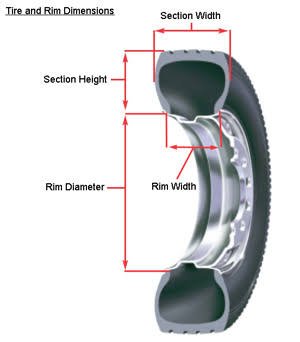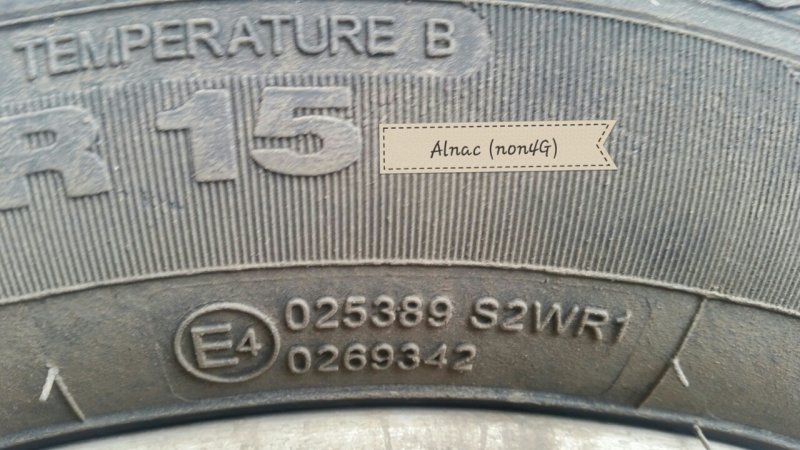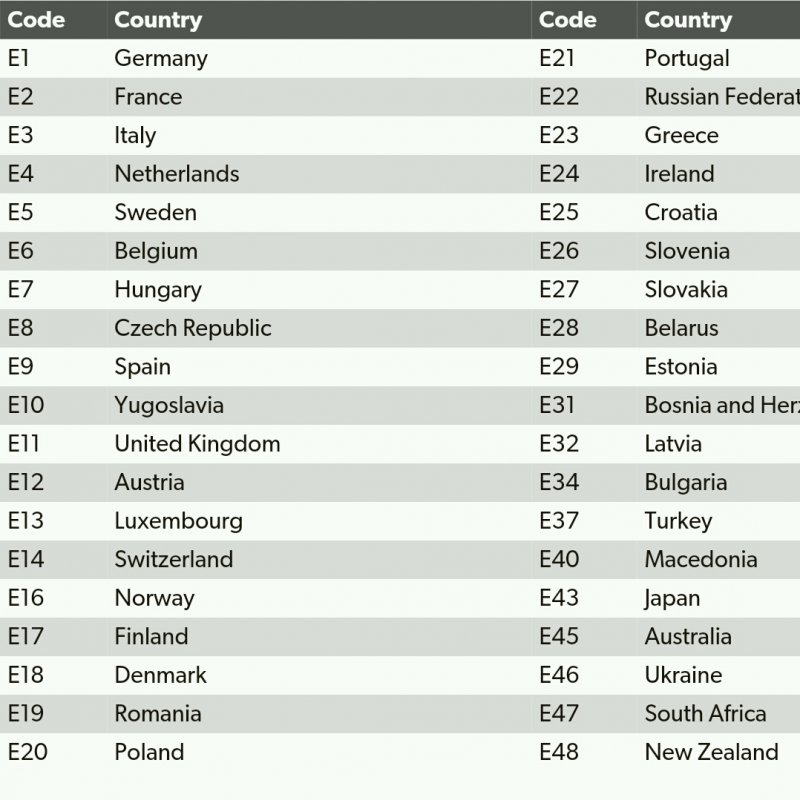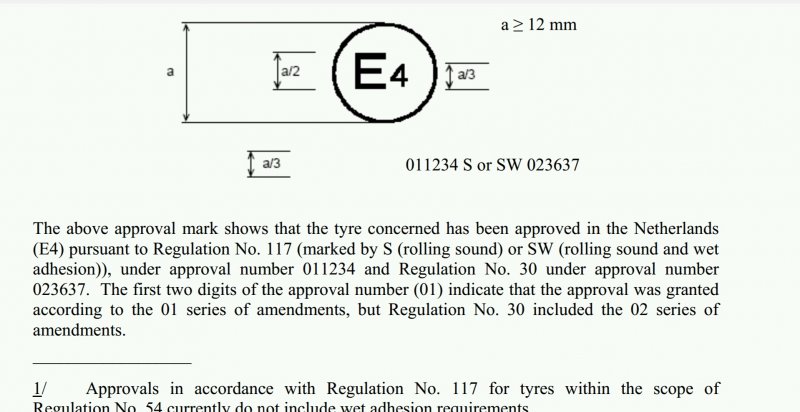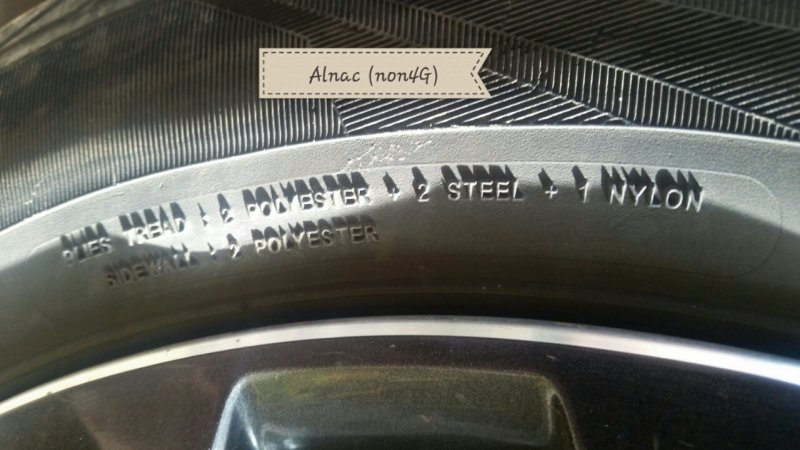Meaning of Tyre Readings
- Thread Starter vroom
- Start date
Am enlightened with these info !!!! I was unaware of some of the info like speed index max loadindex and manufacturing date etc.very very informative thread.
rated it 5 star .
rated it 5 star .
Thanks for very useful information. Will sure look at this before purchasing new tyre set for my i10.
Like medicines, why tires have not written expiry date on them![Big Smile [:D] [:D]](https://www.theautomotiveindia.com/forums/images/smilies/Big%20Smile.gif)
Like medicines, why tires have not written expiry date on them
![Big Smile [:D] [:D]](https://www.theautomotiveindia.com/forums/images/smilies/Big%20Smile.gif)
Like medicines, why tires have not written expiry date on them ![Big Smile [:D] [:D]](https://www.theautomotiveindia.com/forums/images/smilies/Big%20Smile.gif)
![Big Smile [:D] [:D]](https://www.theautomotiveindia.com/forums/images/smilies/Big%20Smile.gif)
మనిషి
Very informative. More than anything else is the extreme left side of the picture which shows the inflation of the tyre. Under or over inflation kills the tyre and reduces its life and the risk to life. If the tyre is over inflated its like a balloon prone to concussion and if its underinflated then there is a risk of heat build up and subsequent failure of the tyre. So proper inflation is needed for safety. People normally take inflation very lightly which they shouldnt. You should never inflate a tyre after a long haul. inflate while the tyre is cool as the reading would be faulty..
What is meant by sidewall?
What is meant by sidewall?
What is meant by sidewall?
Tyre dimensions
Attachments
-
29 KB Views: 1,079
-
19.7 KB Views: 1,228
We can see tyre ply composition,these are the textile materials used in composition of tyre as a foundation for the tread blocks.
In old days, only cotton plies were used later replaced by Rayon. Rayon too got replaced by Nylon, Polyamide, polyester etc.
The name of the ply is also prefixed by a number which tells us number of plies used in the tyre tread & the sidewall.
ECE /UNECE markings :
Of late, since, 2012 onwards, United nations have passed some regulations so that customers can judge the safety & Eco friendliness of the tyres.
For getting these UN markings on the tyre, tyre manufacturer needs to apply in a member country of UN (Contries who have pledged for safety & anti pollution).
1) Marking is given as a 'encircled' capital 'E' letter on the sidewall, (E stands for Europe, because these regulations were first formulated in Europe & implemented in all the European countries).
2)Letter E is suffixed by a number code, eg 2,1,4.. etc. This number is the codename of the country in which tyre maker of the particular model applied for passing through the safety & environment criteria.
For eg.
E4 means Netherlands
E1 means France.
I am posting a pic of the screen shot of the country code names.
Near the encircled E, you can see few numbers & letters. These numbers suggest the number of the law amendments & application number of the tyre maker.
After these number codes, you can see letters 'S' & 'W'
'S' means tyre has passed the Sound (Tyre noise) test conducted in Europe. European laws are least tolerant to the noise, The letter S is suffixed by a single digit number eg 1, 2.
Number '2' suggests that Sound criteria is fulfilled according to second amendment(as of now, latest).
Letter 'W' suggests suggests that the tyre passes through Wet grip safety test. The letter W is also suffixed by a number. This number again points towards number of the amendment in the law. As of now number '2' suggests latest amendment.
After the letter 'W' you can see letter 'R'. I don't know exact meaning of this, but probably it might be Rolling resistance( less is the rolling resistance, more is the fuel economy.
UTQG RATINGS:
These markings are as per US laws.
Treadwear :
A 12000 km approx. road test is carried out on the tyre & compared with a reference tyre. If treadwear ratings is 300 meaning it can last 3 times more kms as compared to the reference tyre. The reference tyre has got treadwear rating of 100 & lasts usually 11000 to 12000 kms.
Traction :
Test is carried out on the wet test roads.
Ratings are given as follows
AA :Best possible wet braking distance.
A:
B:
C:least acceptable.
Temperature : Lab test carried out to see temperature tolerance due to speed.
Ratings are given as
A[/B]: Best
B[/B]: moderately tolerant
C:least tolerant to the temperature for the tyre specs.
Mefeels, these are the important markings we must see while purchasing tyres.
Please note: all above US & European markings keep changing as per the width, aspect ratio, rim, diameter & speed index & Load index of the tyres.
Also I saw ply composition different for different sizes.
PS :
Of late, I went to a renowned multi brand tyre dealer. He started showing me tyres putting them side by side exposing only the tread patterns.
And asked me to choose a tyre as per my likings.!
Me : "I don't want marry with the tyre, I want to purchase the tires which fulfillls my requirements & VFM. "
In old days, only cotton plies were used later replaced by Rayon. Rayon too got replaced by Nylon, Polyamide, polyester etc.
The name of the ply is also prefixed by a number which tells us number of plies used in the tyre tread & the sidewall.
ECE /UNECE markings :
Of late, since, 2012 onwards, United nations have passed some regulations so that customers can judge the safety & Eco friendliness of the tyres.
For getting these UN markings on the tyre, tyre manufacturer needs to apply in a member country of UN (Contries who have pledged for safety & anti pollution).
1) Marking is given as a 'encircled' capital 'E' letter on the sidewall, (E stands for Europe, because these regulations were first formulated in Europe & implemented in all the European countries).
2)Letter E is suffixed by a number code, eg 2,1,4.. etc. This number is the codename of the country in which tyre maker of the particular model applied for passing through the safety & environment criteria.
For eg.
E4 means Netherlands
E1 means France.
I am posting a pic of the screen shot of the country code names.
Near the encircled E, you can see few numbers & letters. These numbers suggest the number of the law amendments & application number of the tyre maker.
After these number codes, you can see letters 'S' & 'W'
'S' means tyre has passed the Sound (Tyre noise) test conducted in Europe. European laws are least tolerant to the noise, The letter S is suffixed by a single digit number eg 1, 2.
Number '2' suggests that Sound criteria is fulfilled according to second amendment(as of now, latest).
Letter 'W' suggests suggests that the tyre passes through Wet grip safety test. The letter W is also suffixed by a number. This number again points towards number of the amendment in the law. As of now number '2' suggests latest amendment.
After the letter 'W' you can see letter 'R'. I don't know exact meaning of this, but probably it might be Rolling resistance( less is the rolling resistance, more is the fuel economy.
UTQG RATINGS:
These markings are as per US laws.
Treadwear :
A 12000 km approx. road test is carried out on the tyre & compared with a reference tyre. If treadwear ratings is 300 meaning it can last 3 times more kms as compared to the reference tyre. The reference tyre has got treadwear rating of 100 & lasts usually 11000 to 12000 kms.
Traction :
Test is carried out on the wet test roads.
Ratings are given as follows
AA :Best possible wet braking distance.
A:
B:
C:least acceptable.
Temperature : Lab test carried out to see temperature tolerance due to speed.
Ratings are given as
A[/B]: Best
B[/B]: moderately tolerant
C:least tolerant to the temperature for the tyre specs.
Mefeels, these are the important markings we must see while purchasing tyres.
Please note: all above US & European markings keep changing as per the width, aspect ratio, rim, diameter & speed index & Load index of the tyres.
Also I saw ply composition different for different sizes.
PS :
Of late, I went to a renowned multi brand tyre dealer. He started showing me tyres putting them side by side exposing only the tread patterns.
And asked me to choose a tyre as per my likings.!
Me : "I don't want marry with the tyre, I want to purchase the tires which fulfillls my requirements & VFM. "
Attachments
-
264.8 KB Views: 175
-
345.2 KB Views: 204
-
219.3 KB Views: 220
-
343.2 KB Views: 179
-
297.2 KB Views: 203
-
277.6 KB Views: 166
There are some Indian tyre companies who bother to get both UTQG & UNECE markings on the tyre sidewall. And there are some foreign tyre companies who doesn't bother to get it because there is no Indian law which governs tyre safety and environment friendliness.
For eg. Yokohama earth 1, there is no UNECE or UTQG marking. And yes their tagline is "Designed for India" and not "Designed for Indian driving conditions" !
Also there is no point in buying a tyre just because it is manufactured by a big international brand, sometimes Indian brands do manufacture tyres better than eg. much famous tyre brand on internet, the bridgestone B250 vs MRF(See the pics).
One more marking we find on the tyre sidewall is DOT marking.
DOT : Department of Transport.
This is followed by the certificate number issued by DOT,and sometimes week & year of manufacturing.
For eg. Yokohama earth 1, there is no UNECE or UTQG marking. And yes their tagline is "Designed for India" and not "Designed for Indian driving conditions" !
Also there is no point in buying a tyre just because it is manufactured by a big international brand, sometimes Indian brands do manufacture tyres better than eg. much famous tyre brand on internet, the bridgestone B250 vs MRF(See the pics).
One more marking we find on the tyre sidewall is DOT marking.
DOT : Department of Transport.
This is followed by the certificate number issued by DOT,and sometimes week & year of manufacturing.
Attachments
-
237.7 KB Views: 233
-
280.3 KB Views: 162
Hi, need some help regarding my turning radius .. have bought a mm540 and tires seem to be of scorpio's size . The tyres turn on the left side well and good but for the right side it turns half of what it turns on the left. Why is it so and what can I do to improve it so that I can save my tyres. And also a good tuning experience. Please help out , new to the blog.
Aqeebrahil, please start a new thread here The Technical Zone
The tyres turn on the left side well and good but for the right side it turns half of what it turns on the left.
Some tyres have symbols 'M'&' S' marked on their sidewall meaning that the tyres are capable of getting driven on muddy roads & snowy roads.
Tyres do have an expiry date as it will break down after some years and there will be cracks in the tyre after it has passed its prime. It might blow out or fail if it has been on the shelf for some years and you have bought and put it on your car.
Irrespective of whether premium- or cheap tyres are fitted, the age of the tyre also has a large impact on driving safety. A statistical analysis conducted by DEKRA tyre expert Dipl.-Ing. Franz Nowakowski and covering some 1,400 cases of burst tyres and tread separation revealed that tyres aged between seven and eight years had a failure rate of almost 40 per cent. The failure rate of tyres aged between six and seven years of age was “only” about 20 per cent; for tyres aged up to six years of age the figure was significantly lower at six per cent. As the age of the tyre fell, the percentage eventually fell to zero. “Irrespective of this, motorists should regularly check their tyres for damage or have the workshop inspect them,” recommends tyre expert Nowakowski. Also the tread depth deserves more attention since when this has fallen to less than four millimetres, the adherence on wet road surfaces is already beginning to fall away and the braking distance is increasing.




